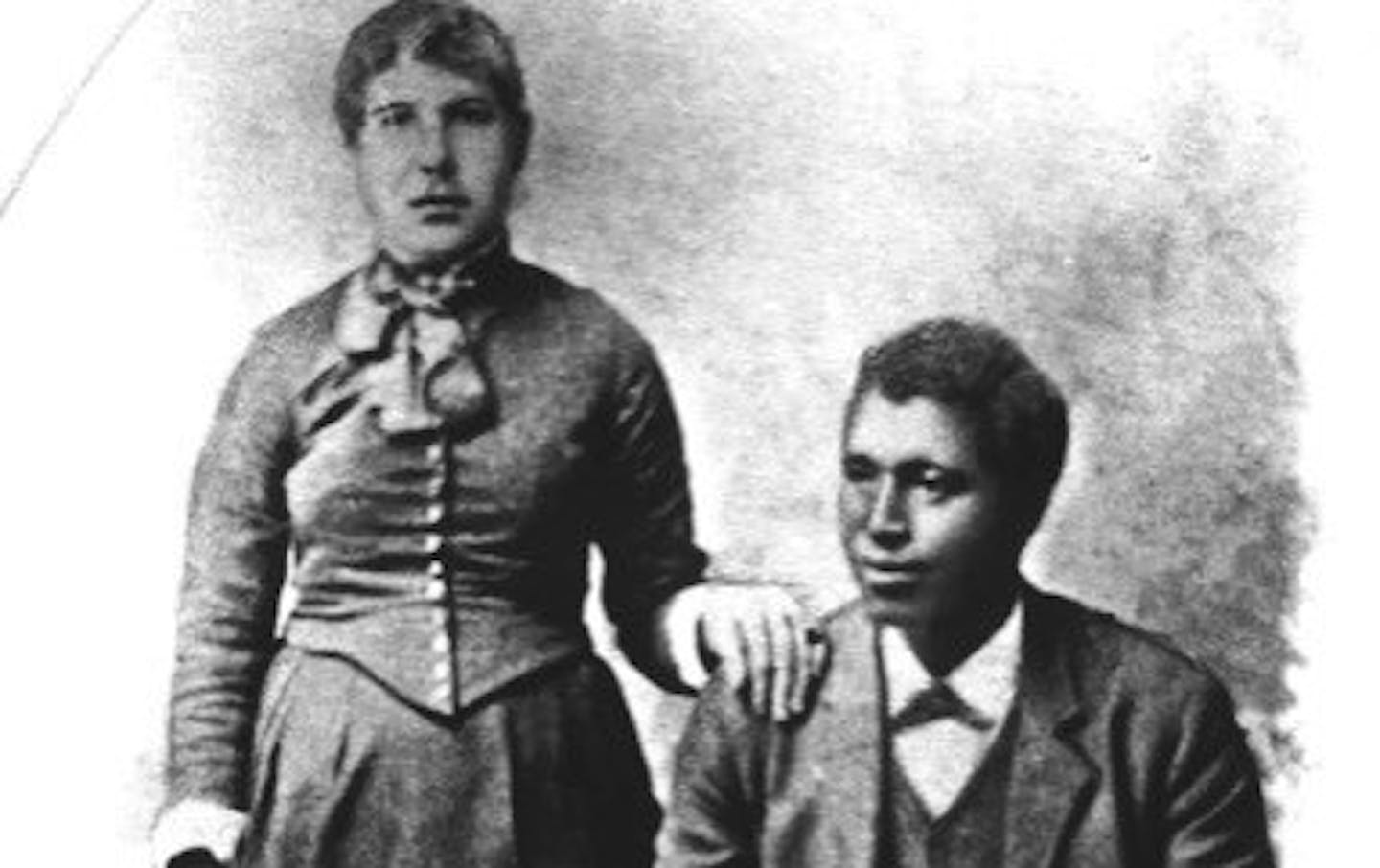 See
more of the story
See
more of the story
Two people from vastly different backgrounds — a formerly enslaved man and a well-to-do female suffragist — opened a butcher shop in 1897 at the corner of 5th and Plum streets in Red Wing. They named it the Equal Rights Meat Market.
Jeremiah Patterson, born into slavery in North Carolina in 1860, was 37 and would be the market's chief buyer. Co-proprietor Julia Bullard Nelson, 55, was a leading Minnesota activist for women's voting rights, temperance and civil rights for former slaves.
Their paths had first intersected nearly 20 years before in eastern Tennessee, where Patterson's family had moved at the end of the Civil War. Nelson was teaching children of freed slaves at a Quaker-run school in Jonesborough, eventually recruiting one of her prized pupils — Patterson — to run her farm near Red Wing.
Originally from High Ridge, Conn., 15-year-old Julia Bullard moved to Wacouta, Minn., in 1857 with her English-born, pioneering farmer parents. She studied education at Hamline University, then based in Red Wing 5 miles up the Mississippi River from her family's farm. At 19, she became the first woman in Goodhue County to earn the state's top teaching certificate.
Her achievement was overshadowed with grief. At Hamline, she'd met Norwegian emigre Ole Nelson, who'd promptly headed off with the 6th Minnesota Infantry to the Civil War, where he contracted malaria in the Arkansas bayous. He married Julia in 1866, but died three years later from his war-rooted health issues at 27 — just five months after the death of their infant son Cyrus.
Widowed and childless, Julia plunged into teaching Black children in 1869 and eventually spent 14 years at it in Tennessee and Texas. For a few years she hired local men to run Ole's 240-acre farm, about 10 miles south of Red Wing in Belvidere Township. But in 1881 she turned to her former student, the 21-year-old Patterson, to run the farm.
"It was a big responsibility and showed she trusted Jeremiah and felt her former student could do it all despite Red Wing being an entirely white community," said Fred Johnson, a history writer and researcher from Cottage Grove.
Johnson, 78, has written extensively about Nelson and chronicled her partnership with Patterson in his 2005 book about African Americans in the Red Wing area, "Uncertain Lives." In a 2020 Minnesota History profile, he says she ignored "the suffocating Victoria-era strictures that corseted American women of her time." Nelson, he told me, was "the most amazing person in the state at that time, nationally prominent in three movements: civil rights, temperance and women's suffrage."
Patterson was one of four African Americans Nelson brought from Tennessee to Minnesota. Martha Miller, a teenager, helped care for Nelson's ailing mother in Red Wing. And there were "three faithful negro men," according to a letter in the Minneapolis Tribune in 1882, whose help with the farm she had "secured ... in the hope of leaving things after this year in [their] charge."
The letter doesn't mention Patterson by name, but it says she had sent one of the Tennessee recruits to buy horses in Iowa. The 1910 federal census lists horse buying as Patterson's occupation.
Patterson thrived in Minnesota, where he went from being Nelson's employee to renter of the farm in two years. In 1886 he married Verna Gaylord, the daughter of locally prominent white settlers in Belvidere Township. They raised nine children, including the eldest, Chester, who became the first Black graduate of Red Wing High School in 1908.
The couple formed one of the very few interracial marriages in the Red Wing area, according to Johnson's book. Combing through written accounts and studying oral histories of Patterson descendants, Johnson couldn't find any reports of complaints about the mixed-race marriage.
"The examples set by Jeremiah and Verna Patterson no doubt forced white citizens in and around Red Wing to reconsider negative beliefs about Black people and mixed marriage,'' Johnson wrote in his book. "To the people of Red Wing, the Pattersons presented a new and significant kind of American success story."
The Equal Rights Meat Market lasted only a couple of years. But it symbolized what was possible for women and African Americans in Red Wing at the turn of the century.
Patterson, his wife, Verna, and Nelson all died within two years of each other, from 1913 to 1915. Jeremiah was 53 and had been bed-ridden in poor health; the obituaries didn't mention his race. Verna died of heart disease at 52.
Nelson died of pneumonia at 72 in a Red Wing hospital, after a grueling train tour of North Dakota stumping for women's suffrage. She was buried with her family in Red Wing's Oakwood Cemetery — the same place where the Pattersons rest today.
Curt Brown's tales about Minnesota's history appear every other Sunday. Readers can send him ideas and suggestions at mnhistory@startribune.com. His latest book looks at 1918 Minnesota, when flu, war and fires converged: strib.mn/MN1918.







